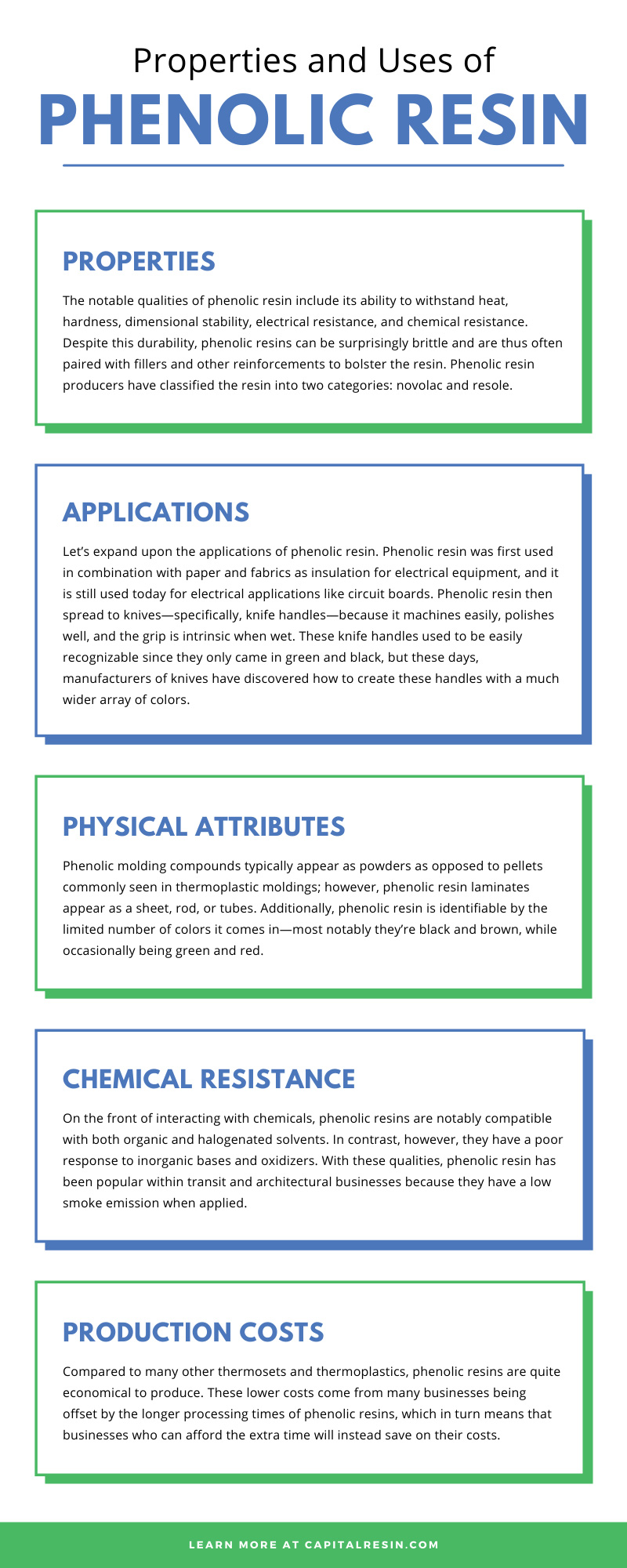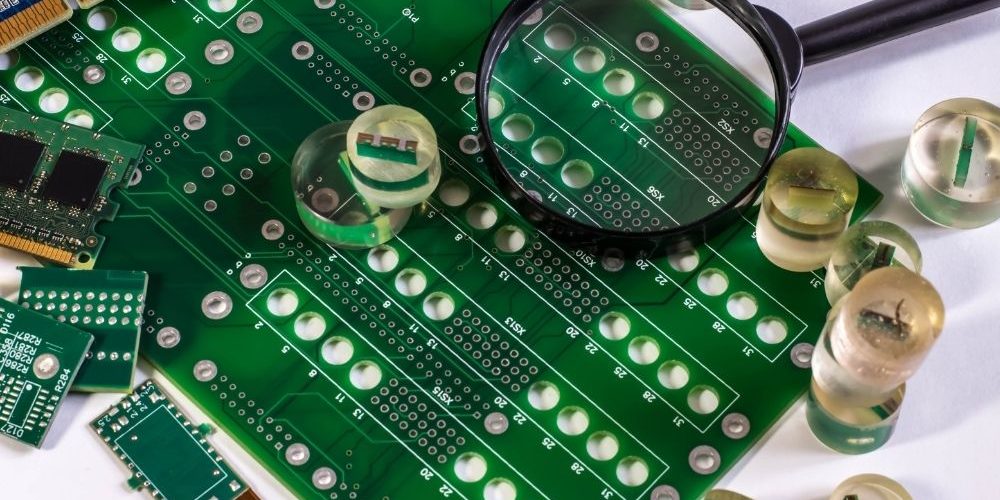Phenolic resin is notable for being a type of thermoset polymer, meaning that it cures into an altered form than when it is uncured; however, unlike other varieties of plastic polymers, it cannot be re-melted and re-molded. This comes with the cost of recyclability, as the resin cannot be re-molded after it is cured and taken shape. Other polymer resins include polyester, urethane, epoxy, and melamine, but let’s look at the properties and uses of phenolic resin to convince you why phenolic resin is the right thermoset for your business.
Properties
The notable qualities of phenolic resin include its ability to withstand heat, hardness, dimensional stability, electrical resistance, and chemical resistance. Despite this durability, phenolic resins can be surprisingly brittle and are thus often paired with fillers and other reinforcements to bolster the resin. Phenolic resin producers have classified the resin into two categories: novolac and resole. Novolac phenolic resins are catalyzed in acid and require a curing agent, while resole resins are the opposite in that they are catalyzed in alkali and do not need a curing agent.
Because some phenolic resins are able to withstand temperatures as high as 550 degrees Fahrenheit and are resistant to steam, phenolic molding compounds, or PMCs, are often added to a variety of formulas in order to take advantage of this fire resistance for the final product. An example of this includes glass fiber and specialty mold compounds that will be put under intense mechanical and thermal stress, such as pump impellers.
Applications
That being said, let’s expand upon the applications of phenolic resin. Phenolic resin was first used in combination with paper and fabrics as insulation for electrical equipment, and it is still used today for electrical applications like circuit boards. Phenolic resin then spread to knives—specifically, knife handles—because it machines easily, polishes well, and the grip is intrinsic when wet. These knife handles used to be easily recognizable since they only came in green and black, but these days, manufacturers of knives have discovered how to create these handles with a much wider array of colors.
Phenolic resin is also useful as binders in friction materials, again thanks to its high heat tolerance. These friction materials are a big part of clutch discs and brake pads—two vital components of cars that allow them to shift gears and prevent the brakes from giving out if you have to come to a quick and sudden stop.
For vulcanized products like tires, phenolic resins are used as enhancers to improve tire traction on roads. Furthermore, the resin is combined with sand to create metal casting molds and serves as a binding agent in materials like refractory bricks. One last application that must be mentioned is how popular phenolic resins are in the lumber industry. Phenolics resins are widely used in the manufacturing of oriented strand board—a wooden board similar to particle board in that it’s made by adding adhesives and compressing layers of wood stranders in specific orientations, hence the name.
As we mentioned, phenolic resins are, unfortunately, pretty brittle. For this reason, the majority of phenolic resin applications must include fillers to bolster the resin’s integrity. To do this, the resin and filler material is most commonly compression-molded, but can also be injection or transfer-molded resin as well. Different fillers improve different aspects of the phenolic resin. For example, cotton improves impact strength, while glass and mineral fillers further improved the heat resistance and stiffness of the resin. The processing time for these thermoset polymers typically takes longer than thermoplastics because of the exothermic chemical reaction that takes place, rather than the polymer hardening simply through cooling. If there are molded parts, then they are subject to a separate heating treatment that adds more time to the processing period. Products made in this way include cookware, stove handles, ashtrays in cars, motor brush caps, bottle caps, and many more.
Physical Attributes
Now that we’ve talked about the properties and uses of phenolic resin, let’s take a look at the physical attributes that phenolic resins appear as. Phenolic molding compounds typically appear as powders as opposed to pellets commonly seen in thermoplastic moldings; however, phenolic resin laminates appear as a sheet, rod, or tubes. Additionally, phenolic resin is identifiable by the limited number of colors it comes in—most notably they’re black and brown, while occasionally being green and red. When made into molding compounds, they are available in single and two-stage forms. Single-stage molding components are ideal for in-mold metal placement for parts if there is a concern about possible corrosion because it bonds well and accepts mechanical assembly.
As mentioned previously, phenolic resins cannot be recycled like thermoplastics because the material takes on a permanent change in its form once exposed to heat. However, there has been some minor success in reusing ground phenolic resin as filler in other products, much like how it has been used to bolster the heat resistance of products. These polymers can be recycled, and even then, they’re not always viable for reuse as a filler.
Chemical Resistance
On the front of interacting with chemicals, phenolic resins are notably compatible with both organic and halogenated solvents. In contrast, however, they have a poor response to inorganic bases and oxidizers. With these qualities, phenolic resin has been popular within transit and architectural businesses because they have a low smoke emission when applied. Blends of phenolic resin have been made for this purpose that meet the expectations of UL fire ratings, or the indicator of product quality and a certification of safety established by Underwriters Laboratories. The Underwriter Laboratories is an organization dedicated to testing products and teaching both businesses and consumers the safety standards products should be held to.
Production Costs
Compared to many other thermosets and thermoplastics, phenolic resins are quite economical to produce. These lower costs come from many businesses being offset by the longer processing times of phenolic resins, which in turn means that businesses who can afford the extra time will instead save on their costs. Contact the team at Capital Resin to talk about your chemical production needs.








